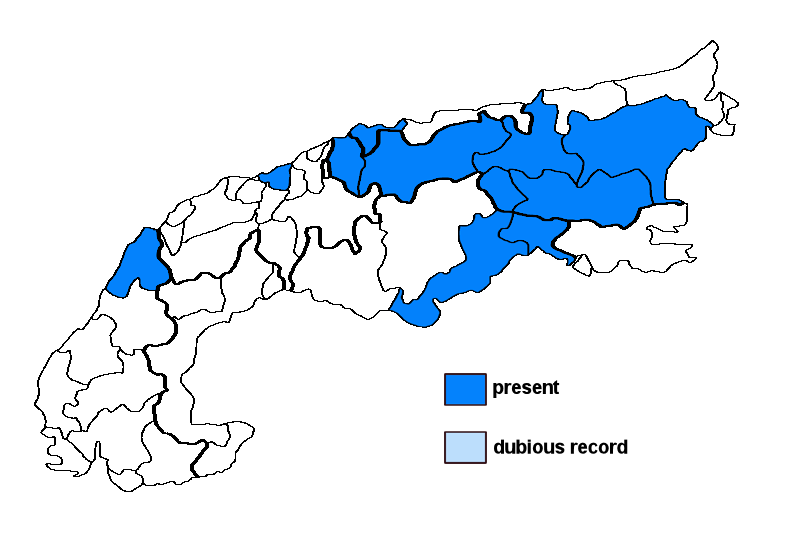Cladonia uncialis (L.) F.H. Wigg. subsp. biuncialis (Hoffm.) M. Choisy
Syn.: Cladonia biuncialis Hoffm., Cladonia uncialis (L.) F.H. Wigg. var. dicraea (Ach.) Räsänen, Cladonia uncialis (L.) F.H. Wigg. var. turgescens (Delise) Fr., Cladonia uncialis (L.) F.H. Wigg. subsp. dicraea (Ach.) D. Hawksw.
Lichenised.
Substrate: acidic soil (mostly on siliceous substrata), living mosses
Altitudinal range: from the montane belt (potential vegetation: deciduous forests dominated by Fagus sylvatica and closed coniferous forests with Picea abies) to the alpine belt (potential vegetation: treeless Alpine grasslands and tundras, to the lower limit of perennial snow and the equilibrium line of glaciers)
Note: a taxon with a mainly anisotomic-dichotomous branching and dichotomous terminal pointed branchlets, containing squamatic acid, genetically distinct from the typical subspecies; over acid rocky soils and in coastal heaths and bogs outside the Alps; in the Alps mainly in alpine heaths.
Austria: Vorarlberg; Tirol; Salzburg; Kärnten; Steiermark; Germany: Schwaben; Switzerland: Schwyz; France: Haute-Savoie; Italy: Friuli; Veneto;





